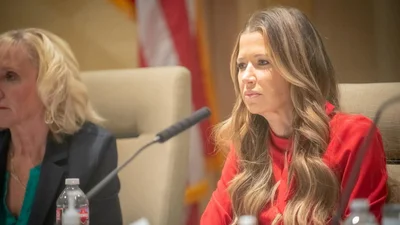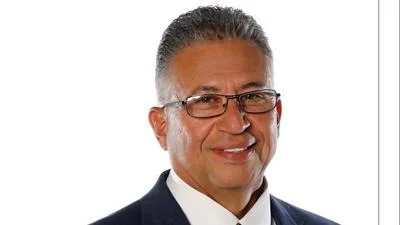Cattle management takes on many forms but firing on stray cattle from a helicopter is a new and disturbing trend, according to Caren Cowan, publisher of the New Mexico Stockman & Livestock Market Digest.
On Feb. 10-11, the USDA Forest Service gunned down 65 head of feral cattle in Gila National Forest with a sniper in a helicopter, killing 29 bulls, 32 cows and four calves. Their carcasses were left to rot, and the toll likely ran much higher, Cowan told New Mexico Sun.
The large number of cows opposed to the small number of calves slaughtered means that many calves have likely died from starvation or predator attacks since the government’s slaughter, she said.
The Forest Service, which Cowan said spent $40,000 to shoot and kill the cattle, did not give ranchers or the New Mexico Livestock Board the opportunity to see which of the targeted cattle were branded. The Center for Biological Diversity (CBD) applauded the aerial shooting.
The government claims that the stray cows cause long-term damage to water quality, riparian ecosystem conditions and habitat for threatened and endangered species. Over the last 25 years it has removed over 640 of the unauthorized cattle from the Gila National Forest.
The New Mexico Cattle Growers’ Association (NMCGA), the New Mexico Livestock Board and other organizations advocated for a less risky approach, but they lost their request for a restraining order. The judge determined that if there was no regulation prohibiting killing of the cattle, there wasn’t anything that could be done to stop the killing spree.
“Over time cattle have strayed from active and now-vacant USFS Forest Service allotments and nearby private lands into the Gila Wilderness in the Gila National Forest,” Cowan said. “In the past, at least one agreement was struck between the USFS and the New Mexico Livestock Board to go in and remove some of these cattle via horseback, according to past and longtime chairman Bill Sauble. Unfortunately, neither agency can locate that agreement now.
“Since the USFS has systematically retired grazing allotments in the area, the problem has gotten worse,” she said. “There are no neighbors to help one another in gathering cattle that have gotten through broken fences or gates that have been thrown down and moved into the wilderness.”
With an increasing unmanaged number of elk in the area, maintaining those fences is a constant task for any rancher, according to Cowan.
Making matter worse, the USFS has removed all infrastructure, fences, livestock corals or any other barriers that might allow livestock to be gathered and removed from the wilderness, she said.
“The urgency in removing estray cattle from the Gila took center stage in early 2020 when the CBD filed a lawsuit against the USFS charging riparian damage by livestock although there are also abundant elk herds in the area,” Cowan said. “Shortly after that suit was filed, the USFS asked former state Sen. Gabe Ramos [D-Catron County] to request state funding to remove the stray livestock. That plan did not meet with the satisfaction of livestock trade organizations or the NMLB.
“During the spring of 2021, there began to be rumors that the USFS intended to start aerial gunning of the livestock,” she said. “That caused an uproar not only in the ranching community but from the public as well. In response, the New Mexico Cattle Growers’ Association (NMCGA) and others sent a notice of intent to sue to the agency. The Grant County Soil and Water District (GCSWD) tried to work with the USFS. They held a meeting with the Gila National Forest supervisor to find out what could be done to keep cattle from being slaughtered with a helicopter and a sniper.”
Cowan said the USFS indicated a willingness to work on the problem and admitted that it had a hand in creating the problem but argued that it didn’t have the money to solve the problem. At that meeting the USFS said that they would not immediately begin with the slaughter, she said, but there needed to be a plan in place to start removing the cattle.
“The USFS offered money to the GCSWD or other local organizations to get the cattle removed. But that was a bigger project than the locals could tackle alone,” Cowan said. “The GCSWD offered to work on a way to find funding to send cowboys into the wilderness to gather the livestock that could be gathered.
“A discussion draft of a proposal was sent to the NMLB as a starting point for discussion," she added. "Instead, the NMLB called a meeting on the issue, took testimony and went into executive session. When the meeting resumed, the board members voted against assistance, although they stated they were vehemently opposed to the killing of the cattle."
The USFS settled the CBD lawsuit in the fall of 2021 and hired a contractor who used both a helicopter and cowboys to try and gather the cattle. It was estimated there could be 250 head or more in the area. That contractor met with limited success, according to Cowan. She said although aerial gunning is sometimes necessary to control predators, Forest Services never should have shot cattle.
"It’s not as if they were damaging the land," Cowan said. “They weren’t. Radical environmentalists said the cattle were harming riparian areas. We have photo evidence to the contrary. Elk are the biggest problem in tearing up fences. There are at least four times the number of elk than cattle in the area."
According to the New Mexico Department of Game & Fish, there are approximately 16,000 elk in the same area.
Cowan said the federal government was able to get away with this action because it was not forthcoming, adding, “Dishonesty about what their true plans were.”
No other states have done this, Cowan said, and Wildlife Services should have “stayed out of it,” in her view.
“It is not the service's job to keep responsible management,” Cowan said. “That is the job of the federal land management agencies.”
She thinks, however, it likely will happen again in early 2023.
A campaign has been created to investigate the slaughter and ensure the government is not able to do it again, she said. Opponents of this program won’t give up the fight.
“A temporary restraining order was filed to try and stop the slaughter,” Cowan said. “The underlying lawsuit continues. Funding is being done via fundraising efforts at all levels.”
People who want to get involved can by making a donation at https://givesendgo.com/savecattlenow.









